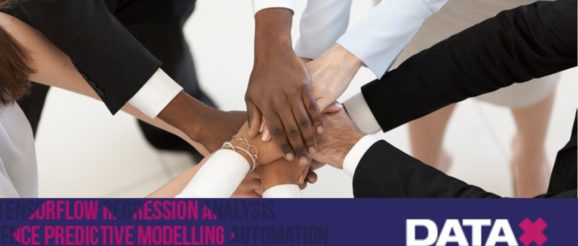5 Ways AI is Creating a More Engaged Workforce | Articles | Chief Human Resources Officer | Innovation Enterprise

We all know that engaged employees create better
work. They are happier and they work
harder. They make bigger
contributions. Their companies are more
prosperous.
Companies that demonstrate high employee engagement levels report a 4X multiple on
earnings-per-share compared with their competitors. That translates into a 21 percent greater
profitability, higher employee retention, and more loyal customers. Yet when the folks at Gallup surveyed U.S.
workers about engagement at work, the results were sobering. Eighty-five percent of workers reported they were not engaged or
“actively disengaged” at their workplace.
In a word: Wow.
Progressive companies have started to re-imagine the
workplace to increase engagement, attract new employees, and keep top talent on
board. They’re embracing technology,
including artificial intelligence (AI) and machine learning (ML).
Many companies are using AI and ML in the hiring
process. By analyzing core competencies
among top performers, AI can create sophisticated models to screen candidates. While this doesn’t guarantee
all hires will be superstars, it does increase the odds. Machine learning can improve the process as
more data is input.
By the time you interview someone, you likely believe
they have at least the basic skills you are looking for in a candidate. The
next step is to understand their mindset and if they will be a good culture fit. Joshua Spilker, Chief Editor at Recruitment.com,
explains, “The last
point is the most important, especially if you are viewing a range of
candidates with similar skillsets. You’ll be most interested in their mindset and mental frameworks for decision-making, rather than trying to see if certain
brain teasers will stump them.”
Tech can create simulations to assess their skills in
new ways. AI can adapt assessments to a
candidate’s level of expertise on the fly.
AI-fueled testing can assess not only whether candidates have the right
answers but help assess their level of engagement.
Rather than one-size-fits-all training, interactive multimedia training courses can
keep team members engaged. Those that
easily master concepts can be directed to more challenging content, while those
struggling can be given more remedial instruction.
Talent Development
“Some companies are already using AI in the HR space to personalize
what you need to learn to grow your career,” said Jeanne Meister, author of The
Future Workplace Experience when speaking to Forbes.
A key factor is keeping team members engaged is helping
them to manage their career path by developing the skills they need to advance
their careers. Companies are
incorporating AI to create personalized career maps that are updated to reflect
a worker’s personality and learning styles.
It can help identify future leaders and suggest skills workers need to
grow.
Streamlining Workflows
AI can streamline workflows by automating repetitive
tasks. This eliminates human errors
while freeing up team members time to take on more challenging work.
AI-driven chatbots are taking on a bigger
prominence in the workplace. Chatbots
are now performing a wide range of tasks, including scheduling, transcribing meetings, proofreading, and
organized projects. Collaboration tools allow teams to work more
closely regardless of physical location.
This opens up the job pool and allows you to tap into top talent you
might not have access to otherwise.
AI Injection
Employee engagement is one of the biggest challenges
many companies face. Injecting AI into
the process can help increase engagement levels and produce better results.
